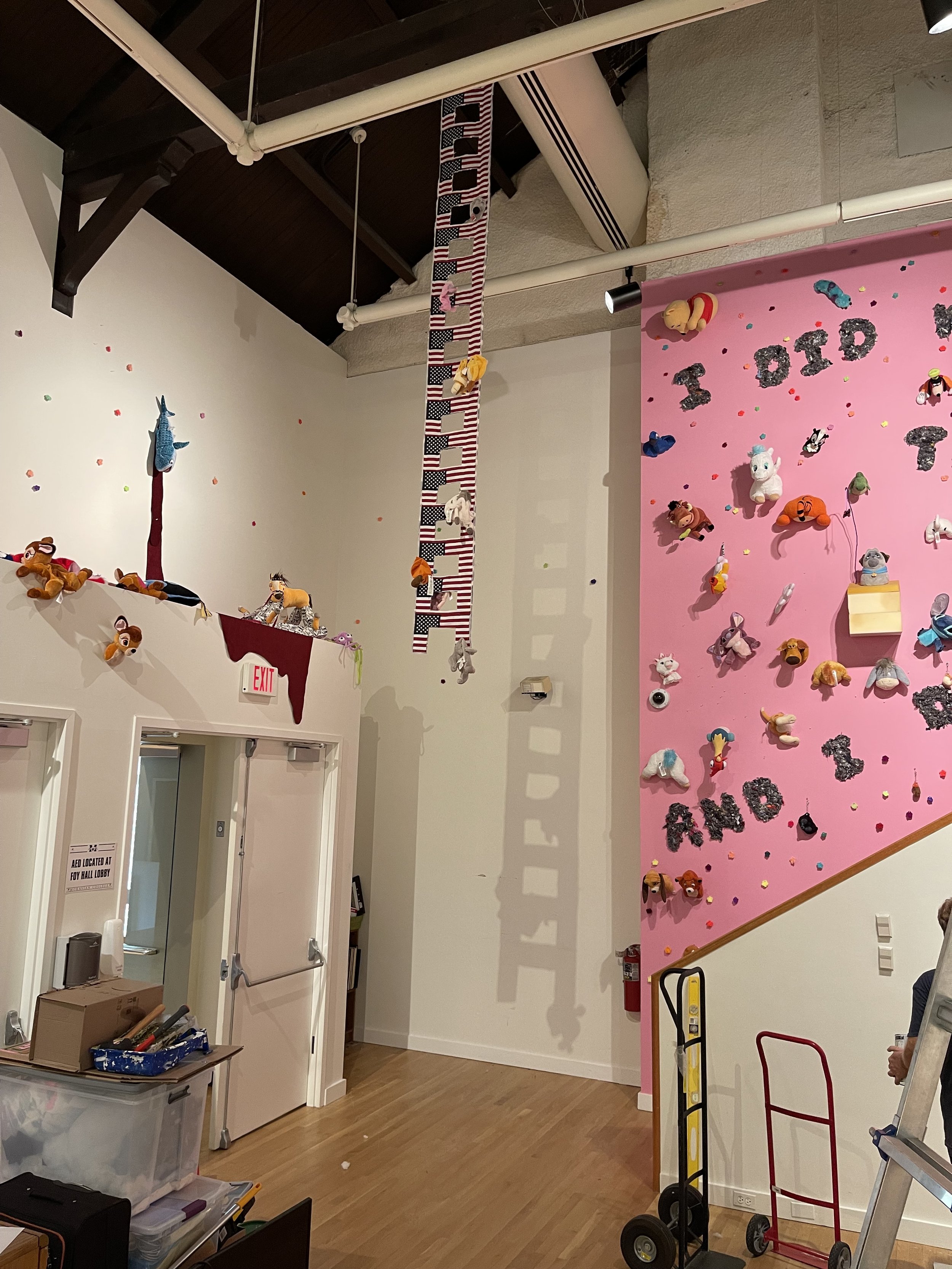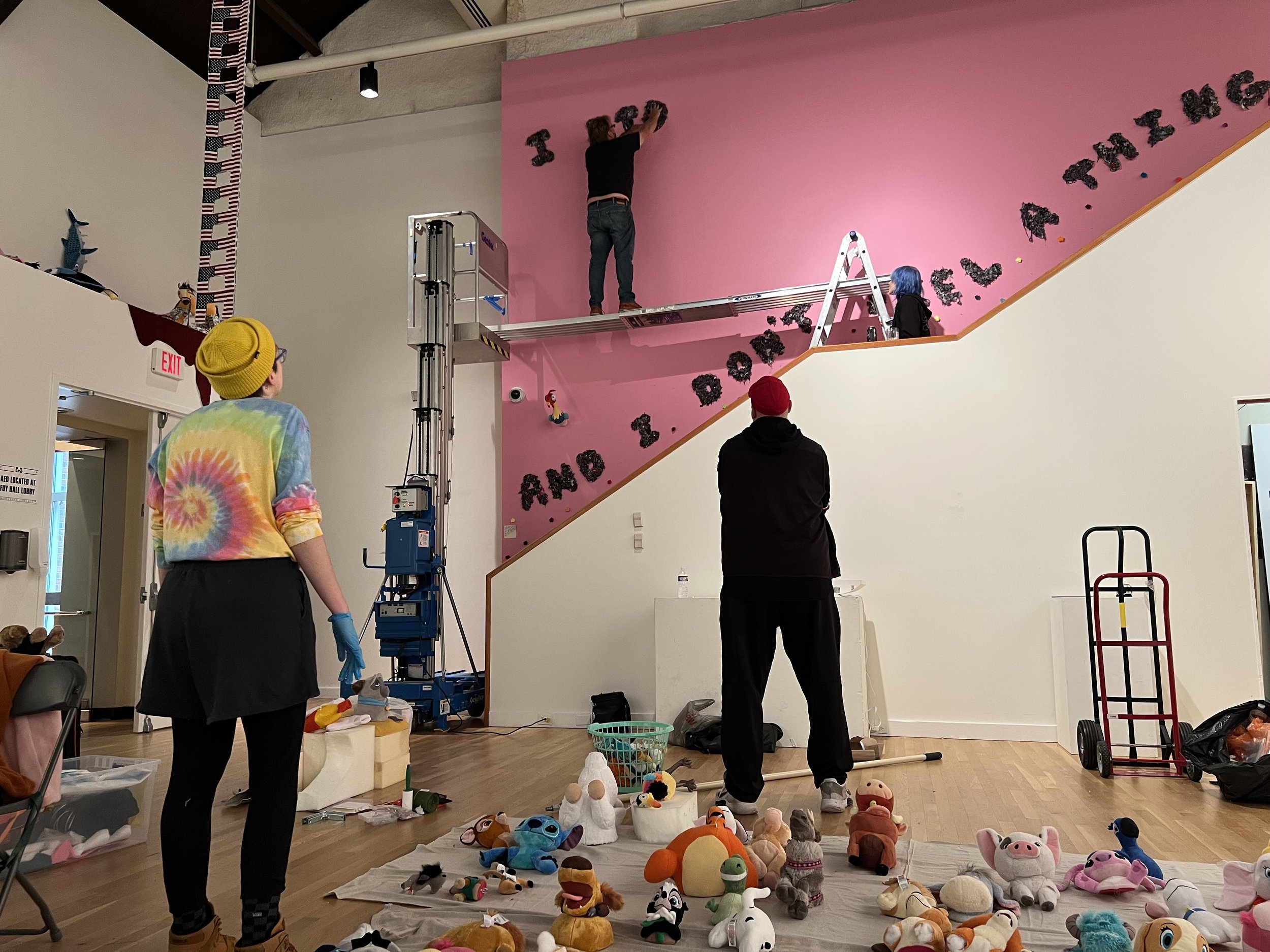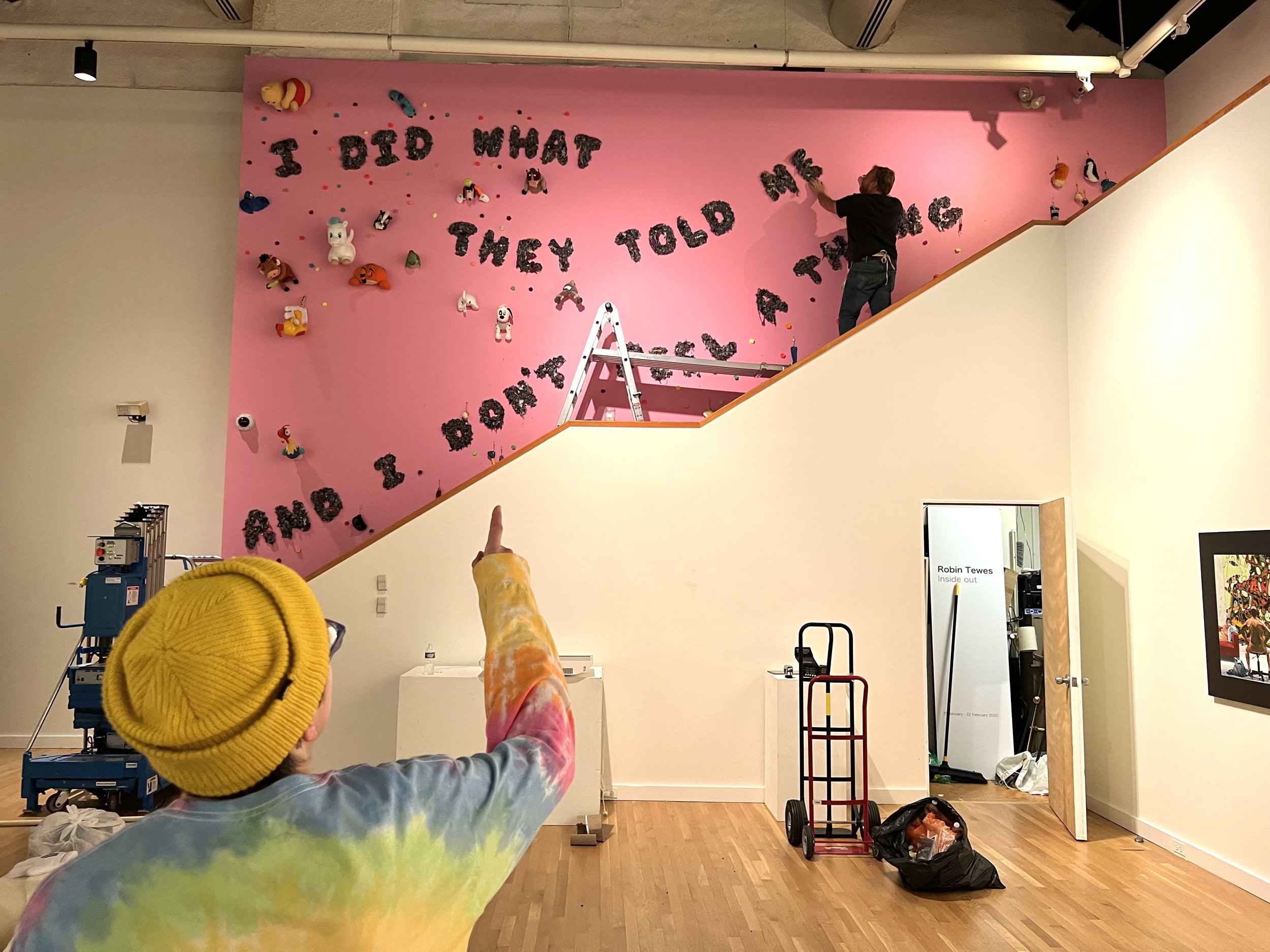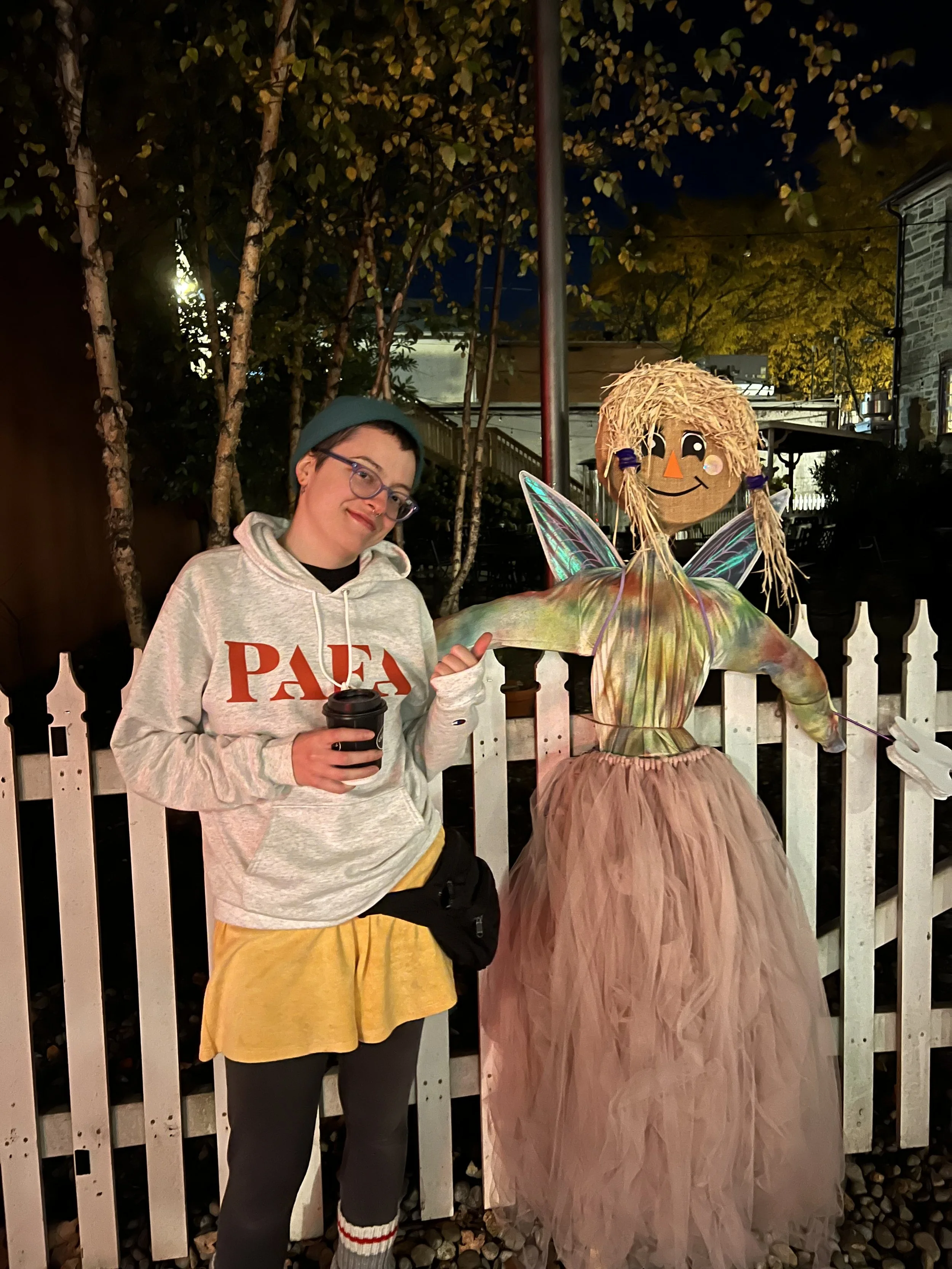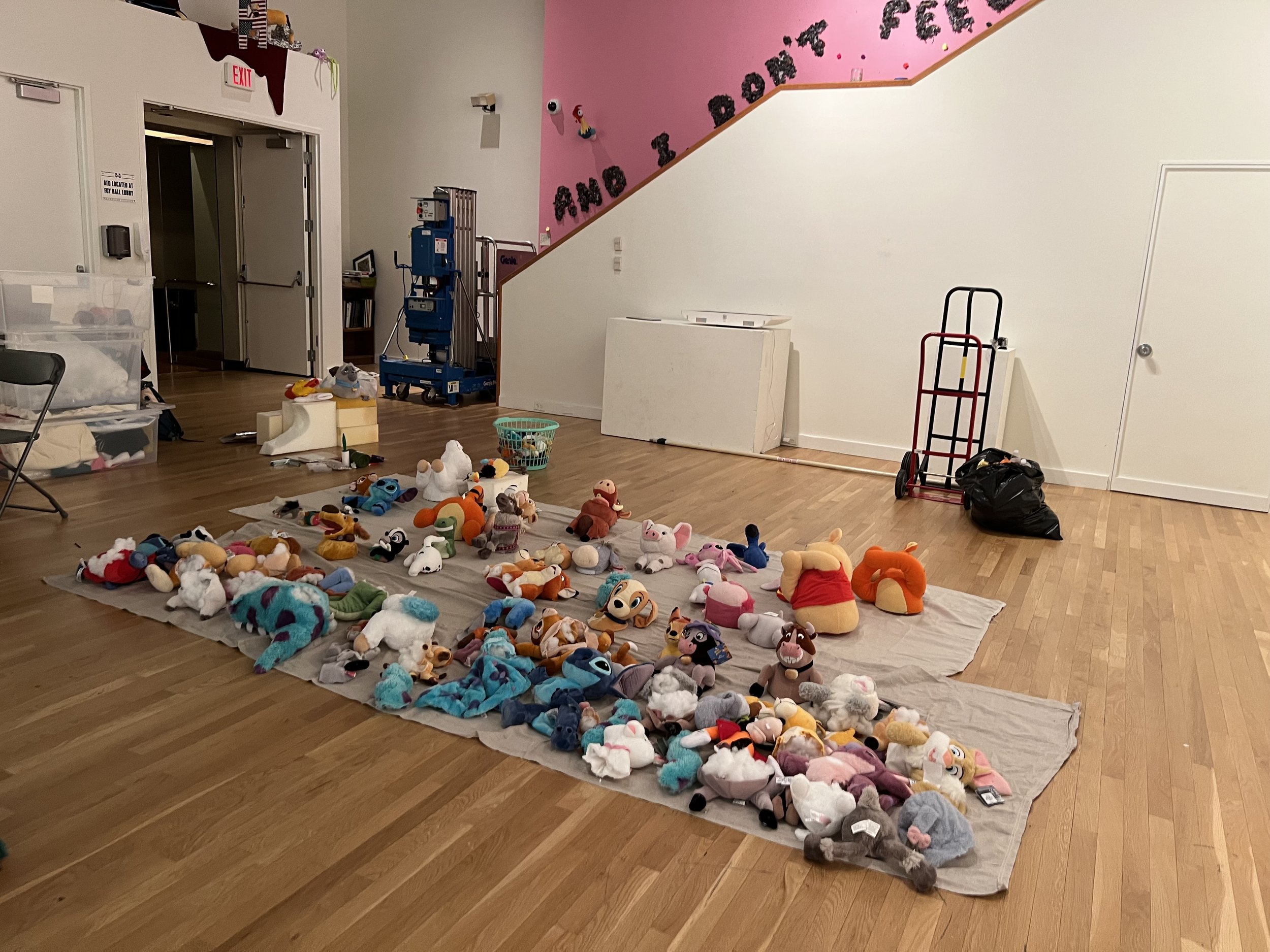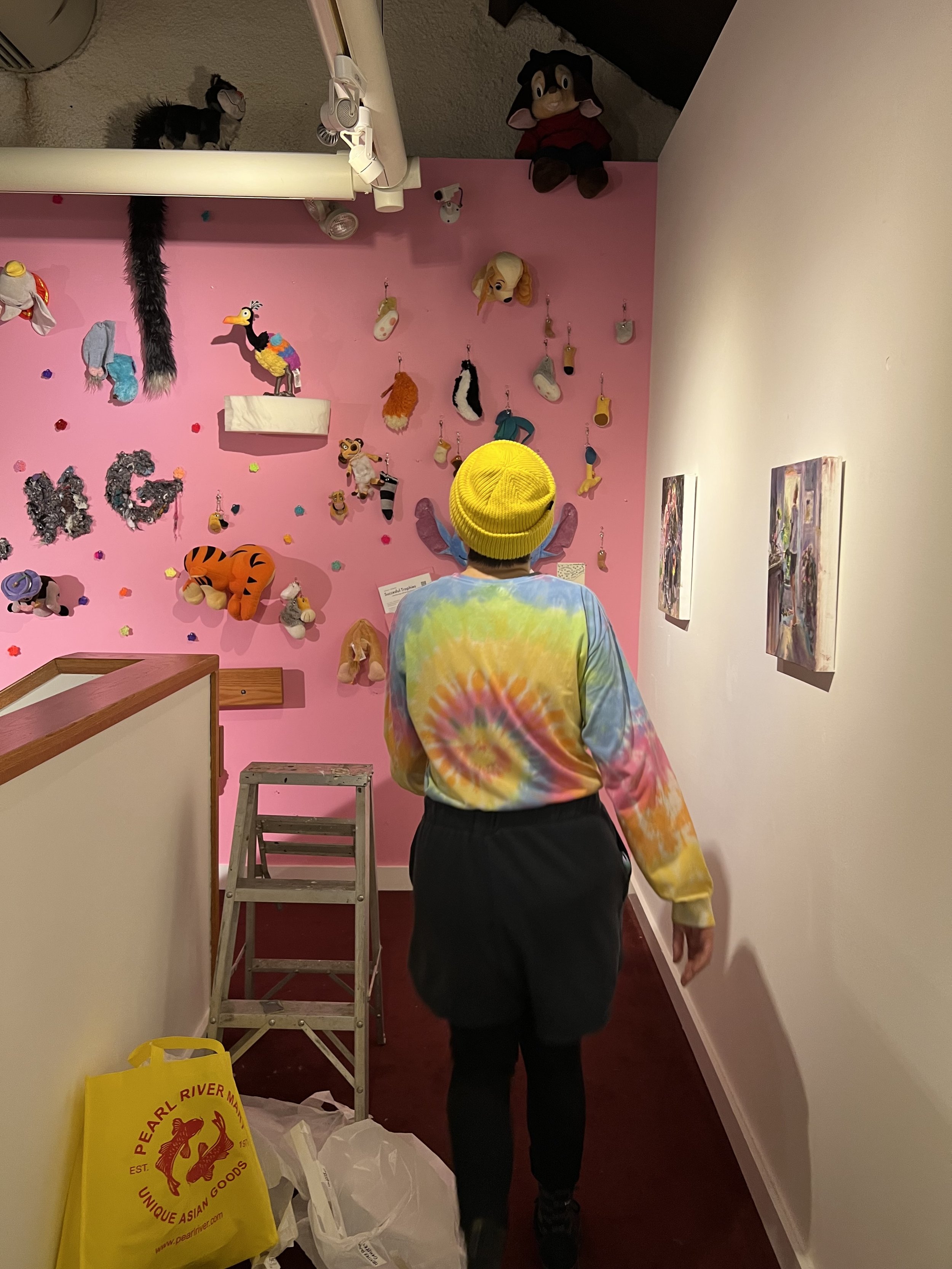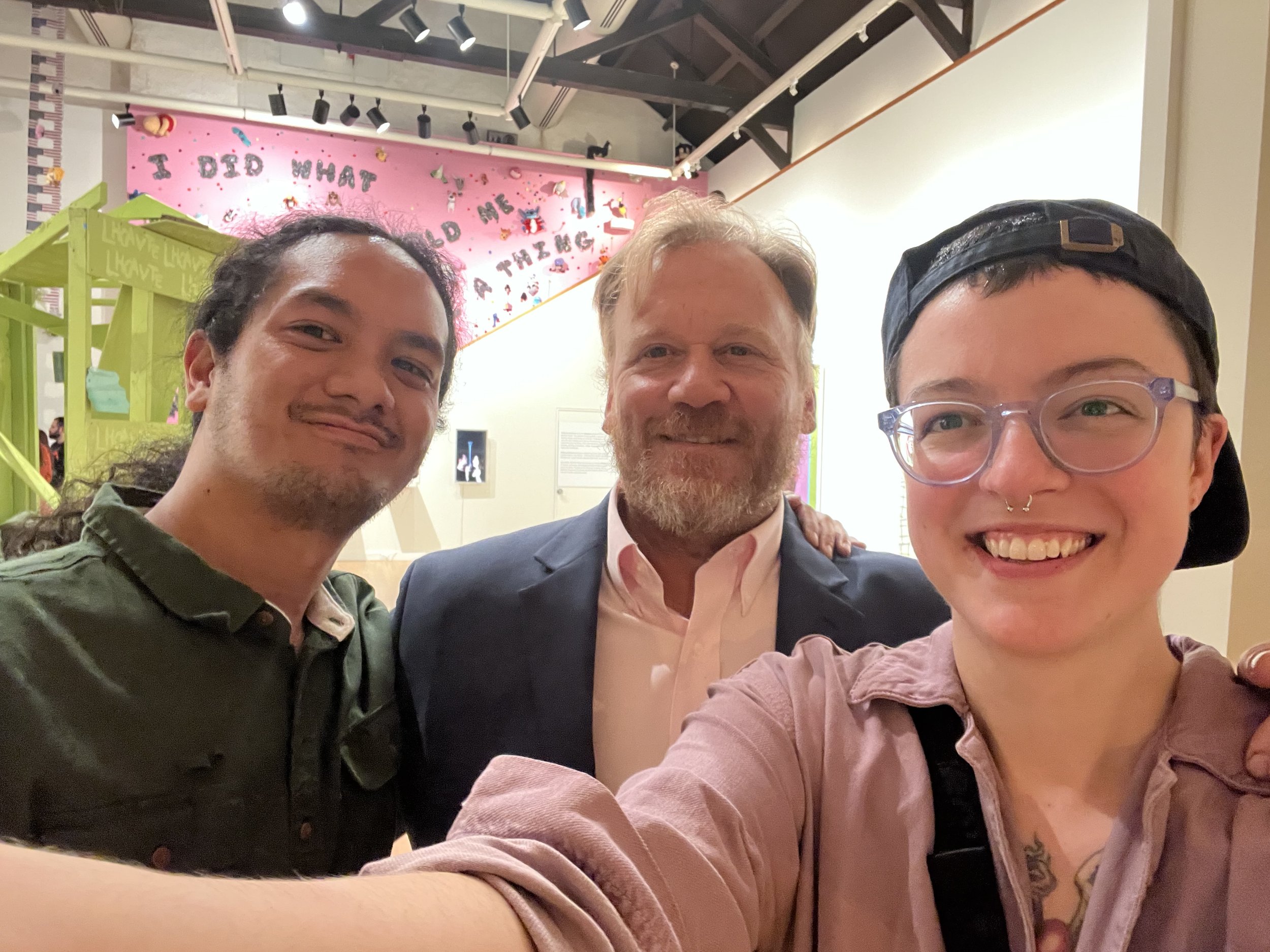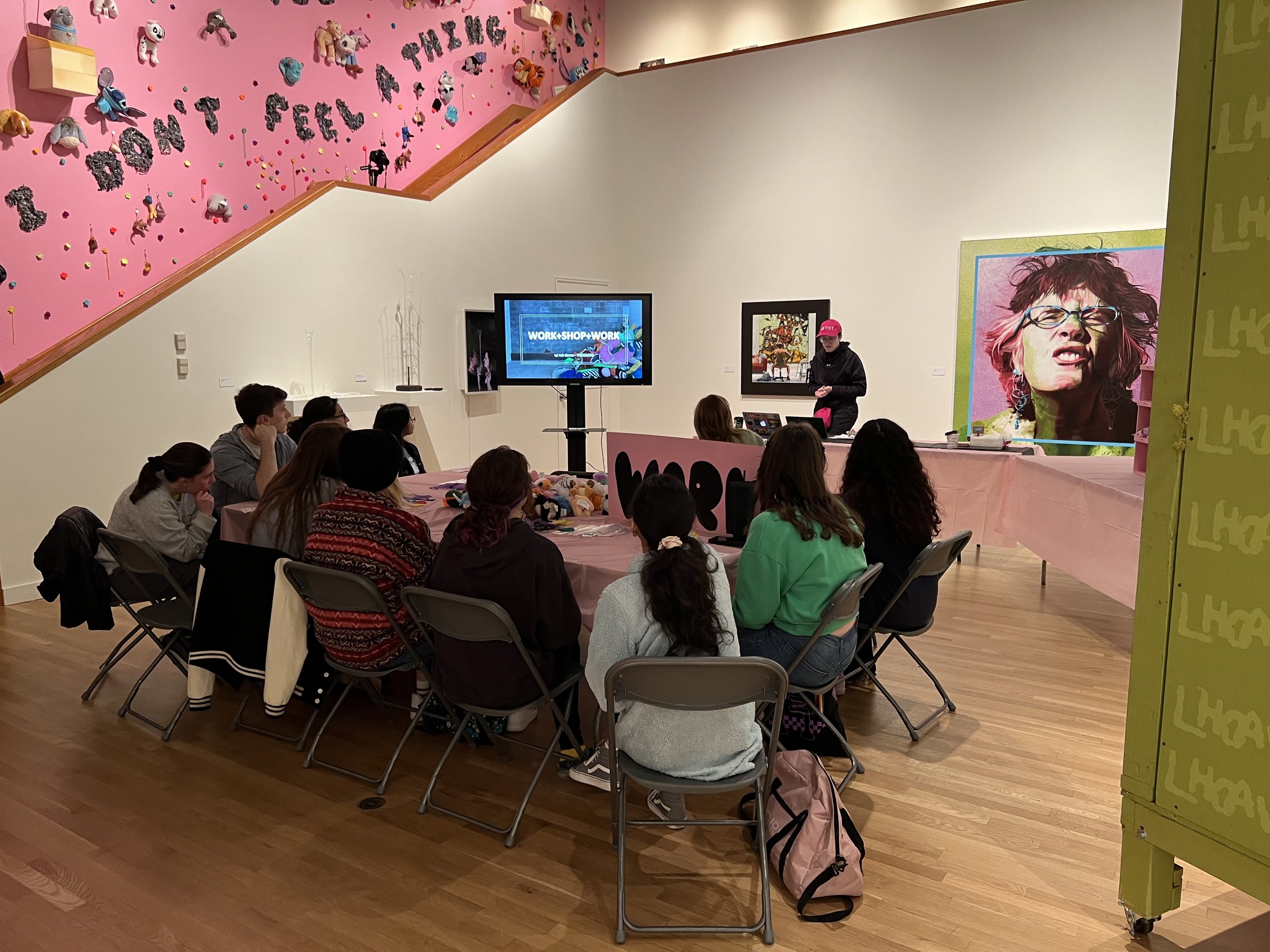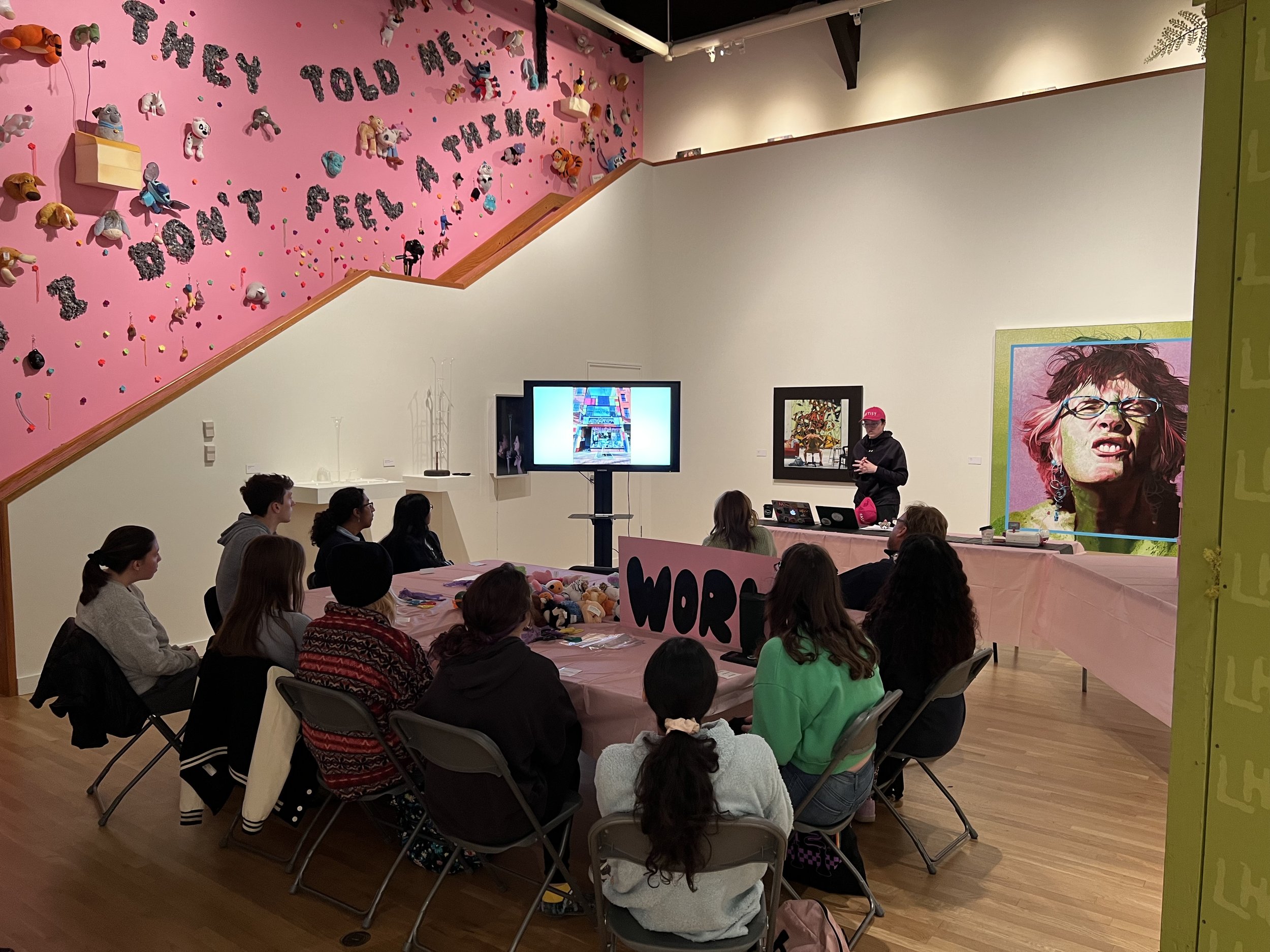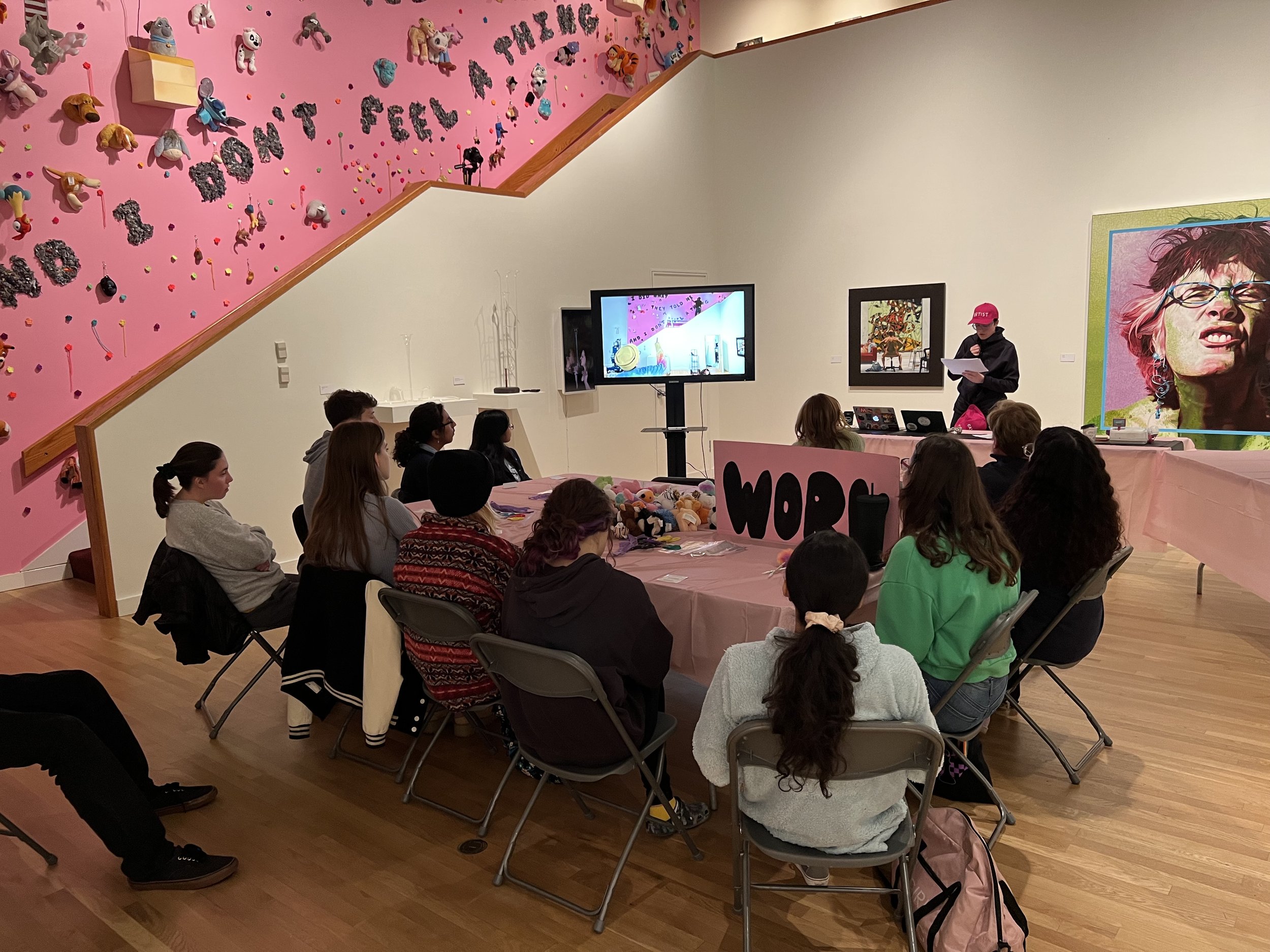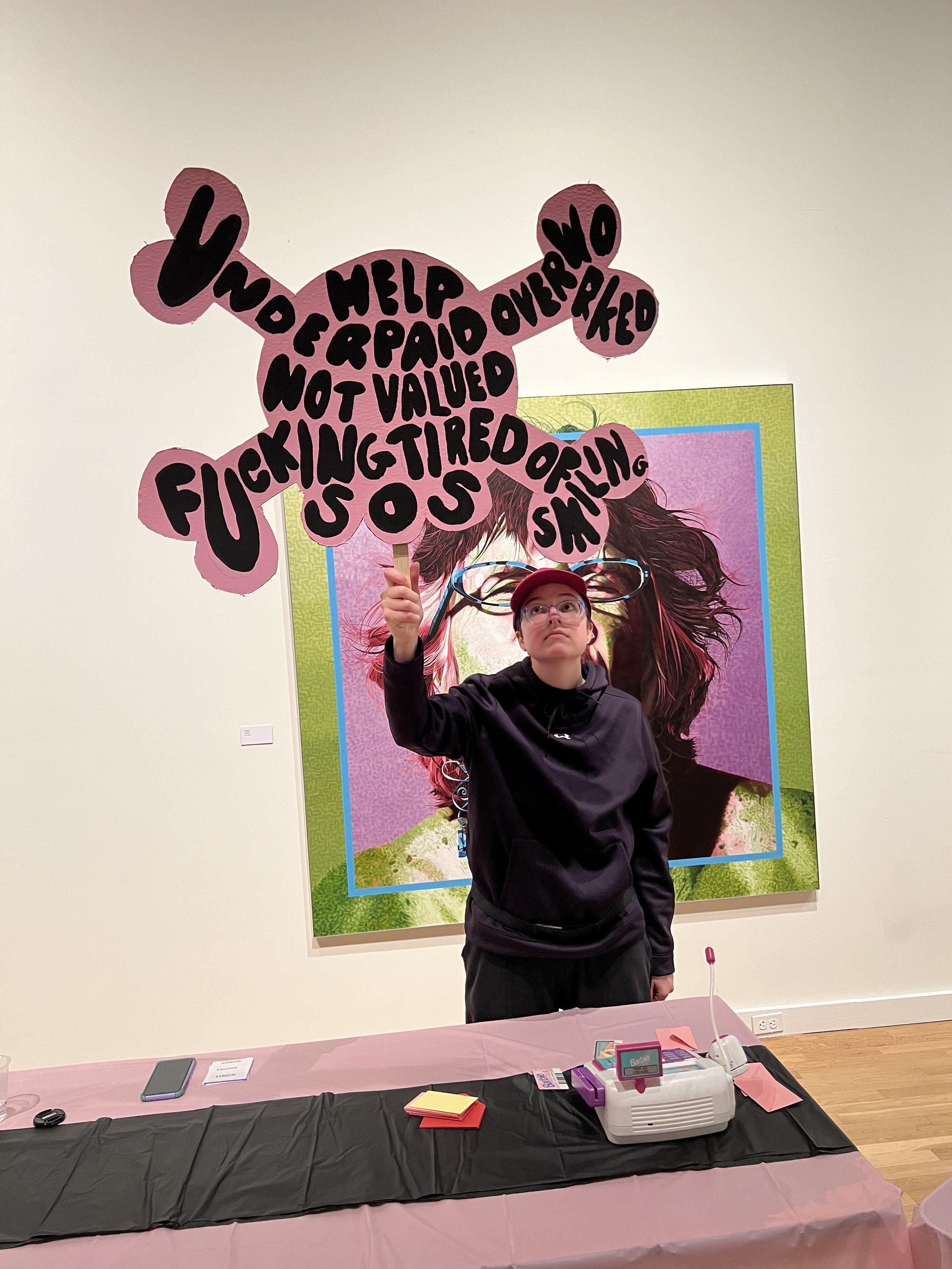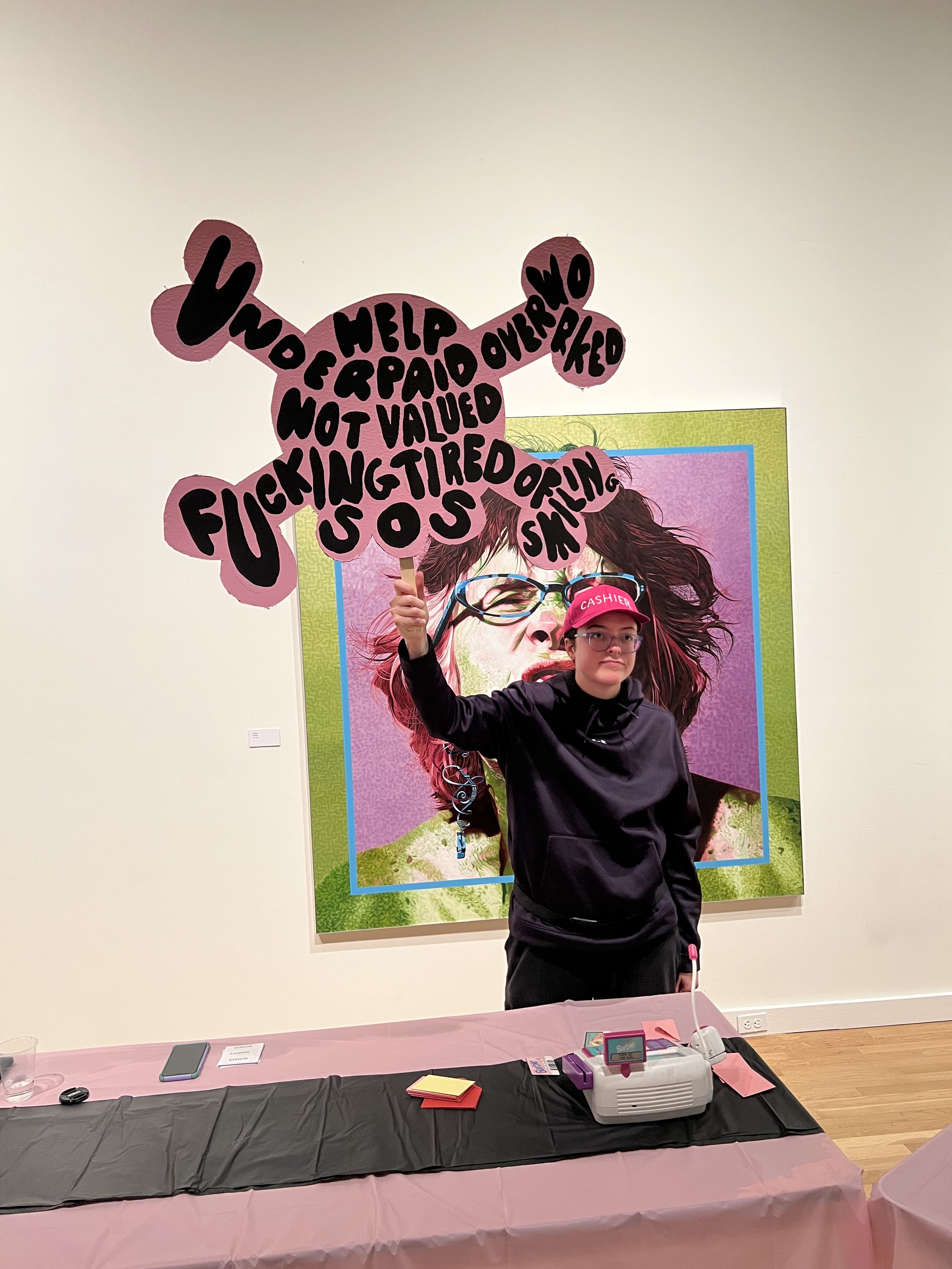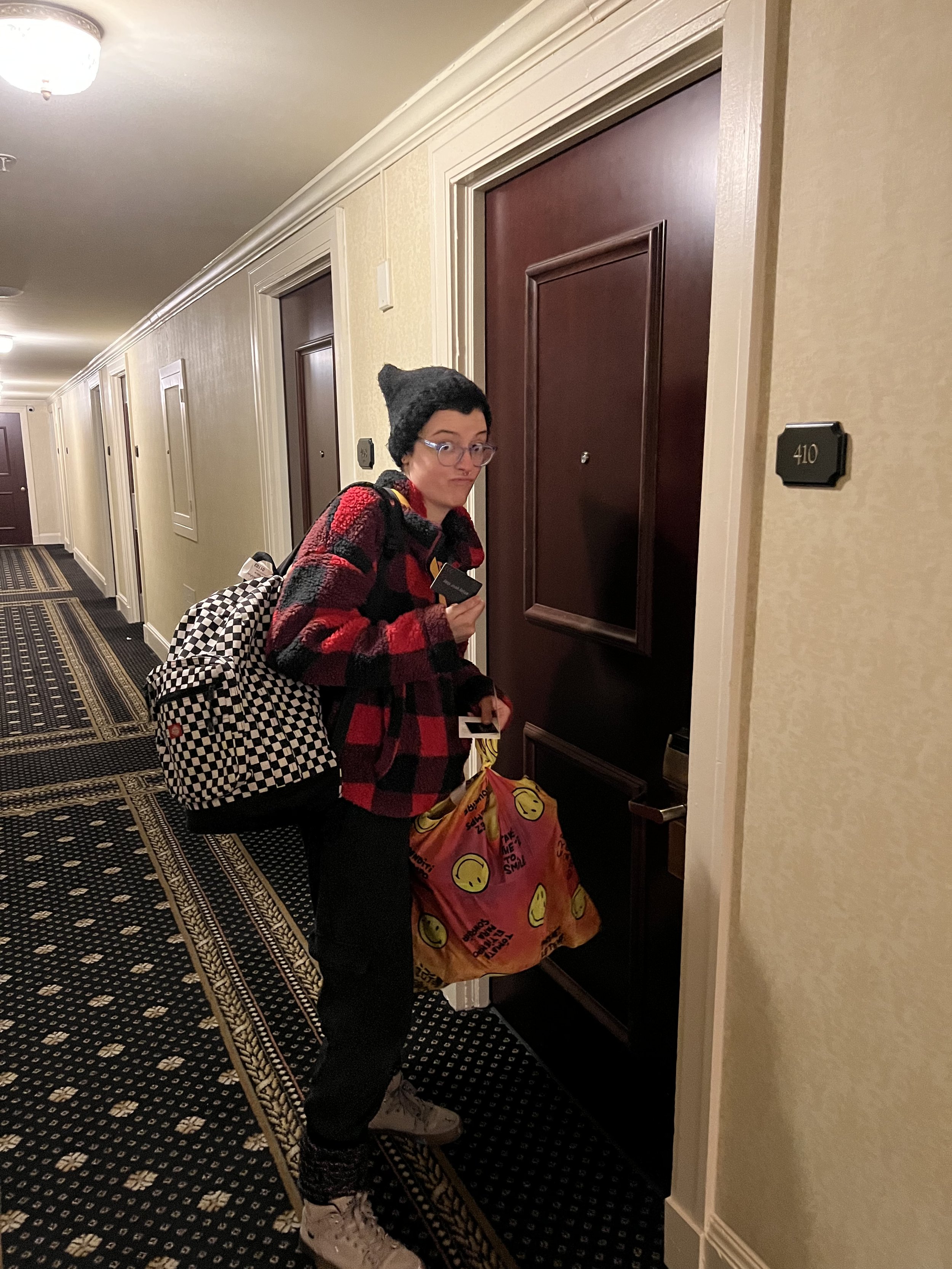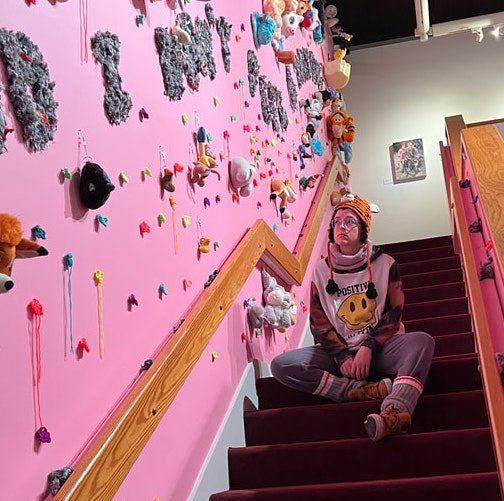sucessful trophies
I DID WHAT THEY TOLD ME AND I DON’T FEEL A THING
Succesful Trophies - I Did What They Told Me And I Don't Feel A Thing (The American Dream) aims to challenge learned perceptions about success in America (The American Dream) using symbolic faux animal trophies as a metaphor for the cost of success both materially and physically - as it is marketed and defined in a capitalist society - highlighting challenges unique to the working class millennial generation.
Medium
Plush, assorted fabrics, wood, push pins, yarn, shredded fabric, latex paint
Year
2022
As a millennial, I was raised along-side a generation of peers optimized for “success and reward” first in school and then through secondary education. As a result of growing up in in a capitalist system obsessed with productivity, reaching goals, and climbing the “ladder of success” - my generation has inherited unique mental and physical challenges recently exacerbated by a global pandemic, crushing student loan debt, relentless assaults on human rights, unprecedented inflation, the decline of the middle class fueling the rise of the wealthy, decreasing job security, income polarization, abuse of human capitol, and fast growing inequality and inequity in the modern American capitalist structure and economy. The magical thinking often referred to as “The American Dream” is just that; a magical thought in today’s Americana for the millennial working class– both rural and urban. The magical world I imagined as a child where all my dreams come true - if I just work hard enough - doesn’t exist, and never did for my generation.
Creating an uncomfortable space made of comfort objects, Succesful Trophies – I Did What They Told Me And I Don’t Feel A Thing (The American Dream) showcases a jumble of beheaded and mounted Disney, Dreamworks, and Universal Pictures plush characters from my formative childhood years and early adult years. The term “Trophy” has plural connotations: visually referencing a taxidermized animal trophy while also denoting an award for achievement. The beheaded character an assault on a soft and innocent object and the trophy as a marker of success establishes a symbolic dichotomy that aims to challenge learned perceptions of success vs. failure in contemporary American capitalism, and the engagement in production and consumption - the hunt - required to obtain this marketed product of success - The American Dream. In many ways, the Disney world, the Disney corporation, helped create the American middle class, market America, and eventually with new executives in power, played a central part in dismantling both in favor of profit over people setting the groundwork for the widening economic inequality that we see engulfing working-class Americans today. In this work, I am challenging my learned formula for success - the binaries of “success vs. failure / production vs. uselessness” - by consuming, destroying, dislocating, and reconfiguring treasured stuffed animals - my childhood reward for a “job well done.”
What does success look like to you? How do you assign value to people, labor, objects? Why? How can success be defined more equitably, and more humanely?
Throughout my childhood, I was rewarded for accomplishments by being allowed to buy new stuffed animals at the local Country Store. Having no perception of adult life at this early age, I deduced this to: work hard = success = reward = stuffed animal. Thus, I developed a strong attachment to fictional anthropomorphic characters, stuffed animals, product consumption, and a “constantly working” attitude that offered a sense of achievement, identity. My American Dream began as a child – watching Disney movies and bonding with my stuffed animals
The magical world I imagined as a child where all my dreams come true and everything has a happy ending doesn’t exist, and never did for my generation. The magical thinking often referred to as “The American Dream” is just that; a magical thought in today’s Americana – both rural and urban – where previous generations hoard assets that allow for the possibility of pursuing The American Dream. The millennial term we’ve coined for this realization is “adulting” – defined as accomplishing mundane and necessary tasks, without any reward – but the problem is – we were promised one if we just worked hard enough and got a college education. The illusion of The American Dream commodifies our lived experience and hangs it on the wall just out of reach - keeping the working class working toward an unattainable goal until we burnout or die – while the wealthy profit from our labor. In 2010, my grandfather did just that – taking just one more extra work trip before retirement that he did not return from. Meanwhile, the corporations that he served are making record profits.
Collected through a process of hunting and gathering, the objects in this installation consist of those I have known since childhood, some that I have recently hunted down, and others that I have made by hand. Considering who profits when creating work helps me to have more intention and integrity with my material usage and way of gathering. For this project, I purchased materials from local Philly fabric stores, individual sellers, and FABSCRAP - a local Philly/NYC based recycling/fabric reclaiming warehouse. Some of these trophied plushies were rare or vintage collectibles before I disfigured them. The hunting and consuming practice of shopping for materials to create this exhibition is as much a part of the concept as the process. What must be consumed to reach a success? What must be sacrificed to achieve a goal? What makes something valuable? For me, the process of cutting apart beloved stuffed animals or animals that I have paid for is an assault on my memories, my comfort, and challenges the way that I normally handle materials in the studio and in life. In this work, I am challenging my developed ideas of success by violating my personal commitment to treasuring stuffed animals – consuming, destroying, and dislocating them. The definition of success—how one defines one’s own success— as well as understands how other see them in terms of successes and failures, is a fundamental aspect of social functioning.It is also reflected in or responses to works of art, which is one way we understand these narratives.
Our childhood relationships to animal trophies – for me having seen them in my hometown dentist’s office, Church retreats, and at stores like Bass Pro Shops or Cabela’s– these relationships to objects exist throughout history around the world for a myriad of reasons and purposes that range from our species reliance on animals for food, to competitions for dominance between social groups, to supporting economies that rely on the trade of local resources. Faux stuffed animal trophies have recently become a popular decoration for children’s rooms – now mass produced and sold at stores like Target, Hobby Lobby, and Michaels. Even the Teddy Bear was created due to a hunting trip, named after Theodore Roosevelt when refused to shoot a baited bear declaring it "unsportsmanlike." What are the implications of having a faux severed and mounted stuffed animal head hanging in a child’s room? How do context and personal experience affect or challenge any or all perspectives related to these topics?
Additional Reading & Sources
Anne Helen Peterson on Millennial Burnout: There's No Decompression Time. Amil Niazi. The Guardian, Life and Style. 2020.
How Millennials Became the Burnout Generation. Anne Helen Peterson. BuzzFeed News. 2019.
How to Do Nothing - Resisting the Attention Economy. Jenny Odell. Published by Melville House. 2020.
Kids These Days- Human Capitol and The Making of Millennials. Malcolm Harris. Little Brown and Company. 2017.
Millennial Burnout is real, but it touches a serious nerve with Critics.Josh Cohen. NBC News, Think. 2019.
NYC Salary Transparency Law Exposes Art World's Lowest Wages
The American Dream and Other Fairy Tales. Directed by Abigail Disney. 2022.
PROCESS
PROCESS
